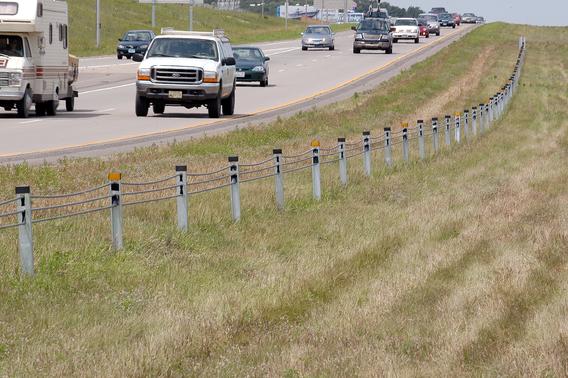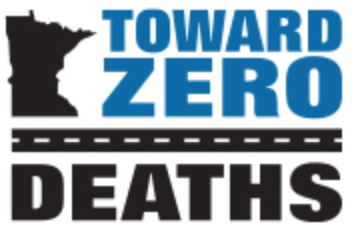
Modifying or reconstructing roadways can be challenging and time consuming. Careful evaluation of road characteristics is the key to a solid investment in public safety. When a traffic safety issue is identified, changing the roadway—including traffic signals, signage, or the like—may appear to be the most direct solution. However, a close look at crash data and driver behavior often reveals that engineering is just one component of a complete traffic safety solution—a solution that includes education, enforcement, and emergency services.
Examples of Engineering Efforts
- Improved intersection signs
- Upgraded pavement markings for better visibility in all weather conditions
- Street lights at intersections
- Modified vertical alignment (grade) of intersections
- Upgraded guard rails to accommodate higher vehicle speeds
- Cable median barriers
- Rumble strips/stripes
- Living and structural snow fences to reduce roadway ice and drifting snow
Tools & Guidance
- Minnesota Crash Mapping Analysis Tool (MnDOT)
- Minnesota Strategic Highway Safety Plan (MnDOT)
- Traffic Engineering website (MnDOT)
- Living Snow Fences website (MnDOT)
Intersection Safety
- Crash Impact of Smooth Lane Narrowing with Rumble Strips at Two-Lane Rural Stop-Controlled Intersections (FHWA, 2010)
- FHWA Comprehensive Intersection Resource Library (2010)
- FHWA Crossover Interchanges
- FHWA Innovative Intersections
- FHWA Intersection Safety
- FHWA Roundabouts
- FHWA U-Turn-Based Intersections
- Minnesota Roundabout Information (MnDOT)
- MnDOT Roundabout Safety Study (PDF) (2017)
- MnDOT Traffic Safety Evaluation at Reduced Conflict Intersections (PDF) (2021)
- MnDOT Intersection Control Evaluation Manual (2017)
- Mini-Roundabouts (Transportation Research Board)
- Reduced Conflict Intersections (also known as RCI, RCUT, J-Turns, Michigan Left, median u-turns)
Lane Departure
Traffic Calming
"Traffic calming" refers to any physical change to the roadway to reduce speeds or promote safety for pedestrians and other nonmotorized road users. Traffic calming can also include strategies for educating drivers and raising awareness of unsafe driving behavior.
Traffic calming solutions must be tailored to the situation to be effective. Matching engineering changes with appropriate public education and enforcement efforts will make a traffic calming project much more likely to succeed.
- Traffic Calming ePrimer (FHWA)
Local and State Traffic Engineers
Building a relationship with your county or city engineering staff is the most important step in resolving questions about engineering and roadway safety. Ensuring safety is one of the primary responsibilities of public works engineers, and their training gives them the tools to evaluate safety issues and recommend effective solutions.
In addition to county and city engineers, your Minnesota Department of Transportation (MnDOT) district office is also an excellent resource. MnDOT works with county and city engineers on many road construction projects and oversees large projects on major state and federal highways (see Road Safety Audit, below).
Road Safety Audit
The Minnesota Departments of Transportation and Public Safety have developed a road safety audit (RSA) procedure to evaluate safety issues on major road corridors. The goal of an RSA is to reduce crashes using methods that can be implemented quickly, in accordance with overall plans for a traffic corridor. An RSA is carried out by a multi-disciplinary team of engineers and public safety specialists who meet with community representatives and local engineering staff before starting their investigation.
Blowing and Drifting Snow Control
Controlling blowing and drifting snow on Minnesota highways can be an effective way to improve safety and reduce traffic fatalities and serious injuries. This issue can be addressed through earthwork grading, living snow fences, structural snow fences, and other anti-driving measures.
